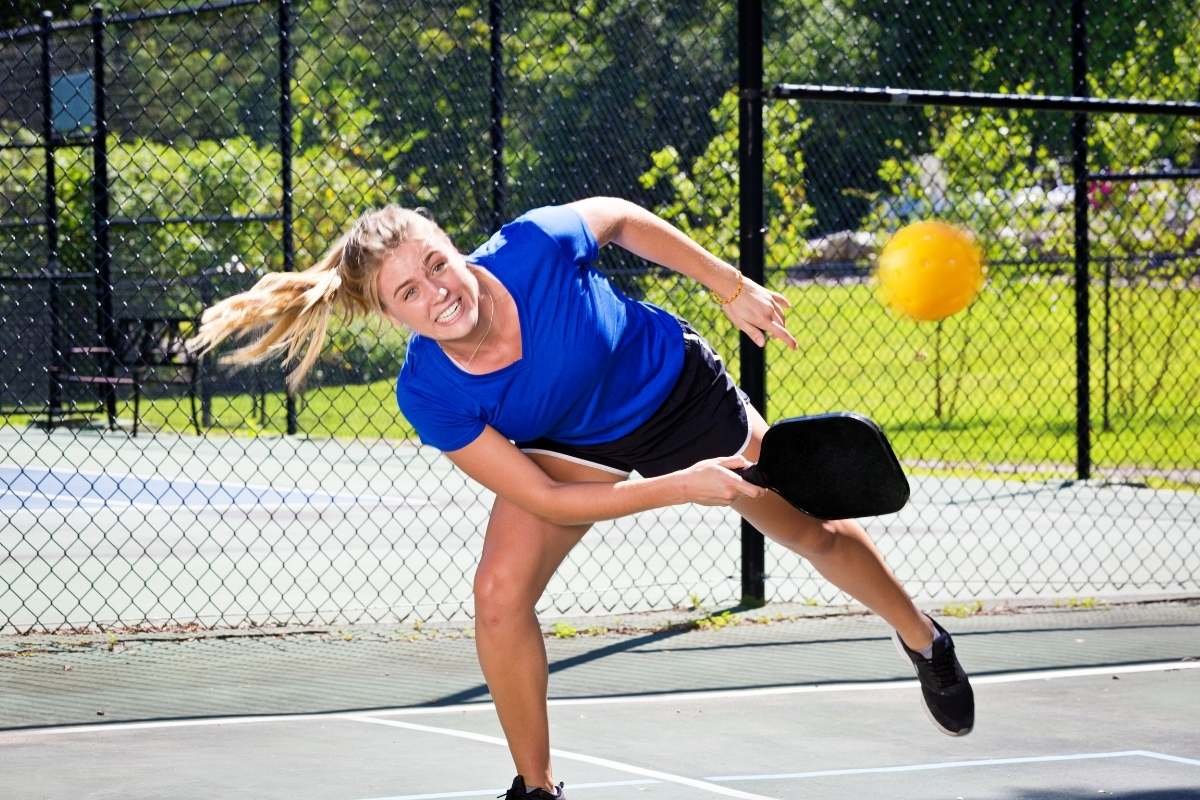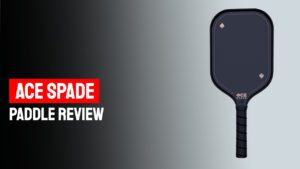How To Put a Spin On a Pickleball?
Last updated

Recently, the spin serve in pickleball has become a game-changer, much like the skilled maneuvers in table tennis. This innovative approach has not only captivated professional players but also led to the introduction of new rules governing the spin serve.
Despite these changes, the realm of pickleball spins remains a vast and exhilarating world to explore. Whether you’re a novice or a seasoned player, the art of spinning the ball offers a thrilling challenge and the chance to significantly enhance your game.
So, let’s dive into the fascinating world of pickleball spins and discover how you can master this dynamic aspect of the sport.
Spin Basics for Beginners
This phenomenon is particularly noticeable when using the best pickleball paddles for spin, which are designed to enhance this effect.
Their combination of lightweight, perforated design and the paddle’s textured surface creates a natural rotational movement upon impact. Even with a basic stroke, the ball rotates through the air, adding a subtle but significant spin.
As a beginner, it’s essential to grasp that while spin is inevitable, control is key. This is especially true when you’re just starting to understand pickleball serve rules. Starting with basic shots like drop serves and drinks at the net is crucial. A drop serve, a softer serve aimed to land close to the net in the opponent’s service zone, can benefit from a gentle backspin.
This backspin, achieved by striking the ball with an upward motion of your paddle, helps reduce the ball’s speed and bounce, making it harder for your opponent to launch an aggressive return.
Similarly, when executing dinks – soft shots played at the net – the aim is to barely clear the net and land the ball in the opponent’s non-volley zone. Here, a slight topspin can be effective.
By brushing over the ball with your paddle at a low to high angle, you can impart topspin, causing the ball to dip quickly over the net and bounce modestly, keeping your opponent off-balance.
Mastering these fundamental shots with their inherent spins is the first step toward building a strong foundation in your pickleball game.
Practice consistently, and you’ll soon develop a feel for how the ball reacts to different strokes, setting the stage for more advanced spin techniques as you progress.
Developing Topspin for Intermediate Players
So, you’ve got the basics down and are eyeing the intermediate level? It’s time to add a new weapon to your arsenal: the topspin. Here’s a quick guide to get you started:
Positioning the Paddle: As the ball approaches, keep your paddle low and angled slightly forward. This starting position is crucial for generating the upward motion required for topspin.
The Upward Swing: As the ball comes into your strike zone, swiftly bring your paddle up and forward in a fluid motion. The speed and smoothness of this upward swing are key to creating effective topspin
Ball Contact Point: Aim to make contact with the lower half of the ball. This contact point, combined with the upward swing of the paddle, imparts the forward rotation or topspin on the ball.
Follow-Through: After contact, continue the paddle’s movement forward and slightly up. This follow-through is essential for adding power to the topspin and controlling its trajectory. It’s not just about spinning the ball; it’s about directing it where you want it to go.
Integrating topspin into your game can dramatically change how your opponents receive your shots.
A well-executed topspin can cause the ball to dip faster over the net and bounce unpredictably, making it challenging for your opponent to return with precision. P
Legality of Spin Serves in Pickleball
To address the core question, spin serves are legal in pickleball, but with some caveats. The rules stipulate how the ball must be struck but do not prohibit spinning it.
However, the legality of these services is continually subject to interpretation and modification by official pickleball bodies.
Players need to stay updated with the latest rule changes to ensure their serving techniques remain within the legal boundaries of the game.
Advanced Spin Techniques
Now, let’s talk about the intermediate hotshots trying their hand at purposeful spins. You’ve got topspin shots, slice shots with underspin, and the trickier side spin shots.
Each of these has its unique place in pickleball strategy. The key to mastering these is focused practice and understanding their strategic application.
Topspin Shots: To elevate your topspin, work on increasing the racket speed at the point of contact and the angle at which you brush up against the ball. This generates a higher arc, causing the ball to dip down quickly and bounce unpredictably upon landing, making it difficult for your opponent to counter.
Slice Shots with Underspin: For slice shots, the paddle moves from high to low at contact. The key is to slice beneath the ball, creating a backspin. This results in a lower bounce, often keeping the ball just over the net and close to the ground, making it hard to attack.
Side Spin Shots: The side spin is trickier and requires you to hit the ball with a sweeping motion, either left or right. This spin makes the ball curve in the air and bounce in an unexpected direction, adding an element of surprise to your shots.
Incorporating these spins into your game plan enhances your strategic depth. Practice them regularly, but remember, the goal is not just to spin the ball but to use spin to control the pace and direction of the game.
Balancing consistency with these advanced techniques is the hallmark of a truly skilled pickleball player.
Training and Practice Tips
Regardless of your skill level in pickleball, consistent practice is essential. For those without access to a coach, the internet offers an abundance of resources.
Engage with online tutorials and match analyses to deepen your understanding of different strategies and techniques. These resources often provide visual and step-by-step guides to perfecting shots, including various spins.
For a more tactile learning experience, a pickleball practice machine can be invaluable. These machines allow you to repeatedly practice specific shots and spins in a controlled environment, which is crucial for developing muscle memory and consistency.
Experiment with adjusting the machine’s settings to simulate different types of shots you might encounter in a game. Regular practice with these tools will not only improve your technique but also enhance your adaptability on the court.







